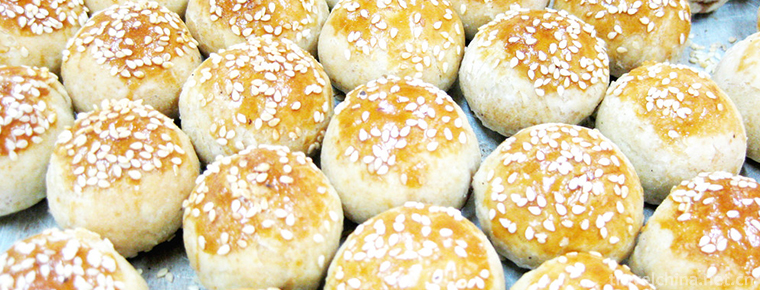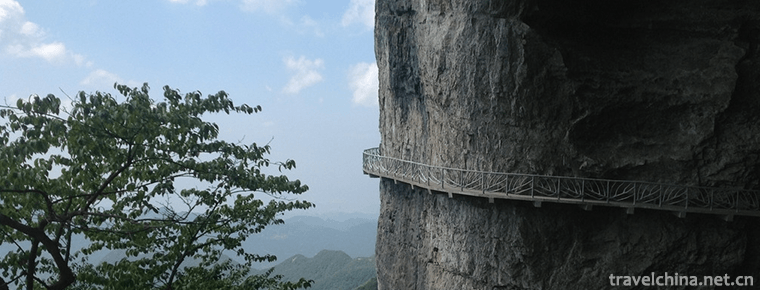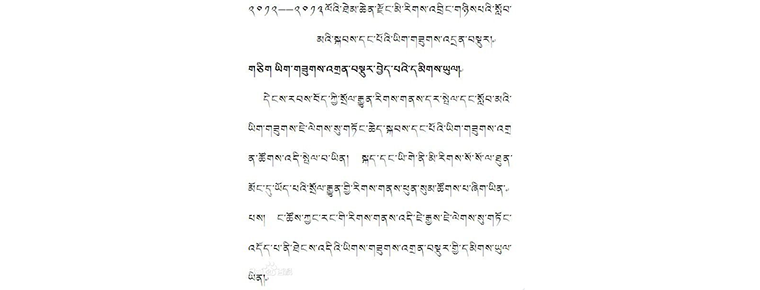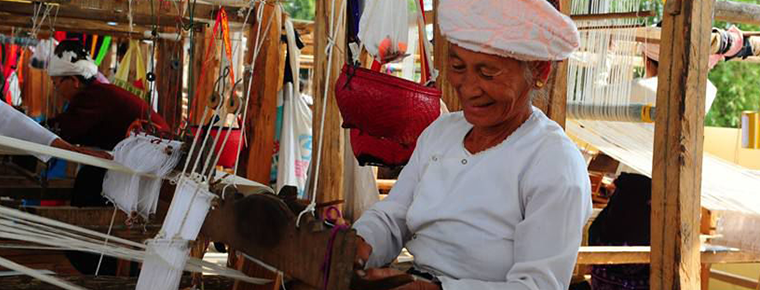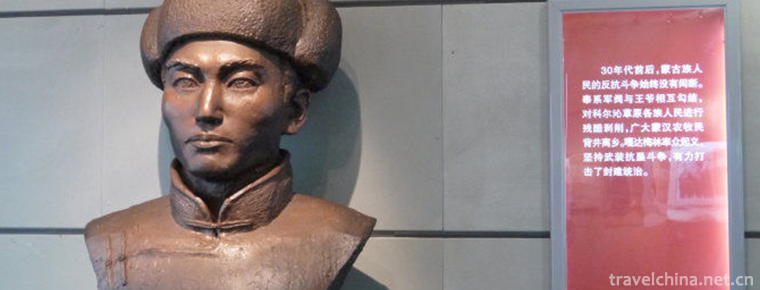Jintang Yunding mountain scenic spot
Jintang Yunding mountain scenic spot
Jintang Yunding mountain is located in the middle section of Longquan Mountain in Jintang County, Chengdu. The scenic spots include Yunding mountain, Hantan ancient ferry, Jintang small Three Gorges of Tuojiang River, jiulongtan, Sanxue temple, Paotai mountain and Tianxing cave, covering an area of 67 square kilometers. Yunding mountain is famous for its quiet and beautiful scenery in Central Sichuan, where there is a scenic spot of "cloud top clear haze". On the side of Qifo rock, there are three characters of "Yunding mountain", the handwriting is simple and vigorous. Ciyun Temple was built in Qi Liang of the Southern Dynasty. It was rebuilt in the Qing Dynasty with an existing building area of 5494 square meters. In front of the temple stands a stone archway, with the official script "Yunding Chan Lin" engraved on the front. The main building of the temple is covered with glazed tiles, which is magnificent.
brief introduction
Dayunding mountain, 982 meters above sea level, is tall and straight. Its cliffs enter into the clouds like knives and axes, encircling for miles. There are dozens of acres of flat land on it, which looks like a city wall. Therefore, it is also called "Shicheng mountain". It is one of the eight defense systems of mountain cities in the late Song Dynasty. It is a famous site of Kangyuan castle. There are many scenic spots such as "sunrise at the top of the cloud", "sea of clouds in the fog mountain" and "clear haze on the cloud top". Dayunting temple on the top of the mountain was built in the northern and Southern Dynasties and was named Qingxiu temple. It was rebuilt during the reign of Emperor Kangxi in the Qing Dynasty. There are stone sculptures on the cliff of Tang Dynasty. Xiaoyunding mountain is 2.5km away from dayunding mountain. The peak is thin. There are more than 110 kinds of trees in the whole mountain, covering the mountain with thick shade and green. The small Three Gorges in Jintang was formed by the Longquan Mountain, which was cut off by Tuojiang River. The gorge is 10 kilometers long, with high mountains and deep valleys. The river water rushes out of the gorge, which is magnificent and magnificent.
Yunding mountain has always been a place for strategists. The Southern Song dynasty built the city here. During the Song Yuan war, they moved to Chengdu Fulu, Chuanfu Road, Anjun and other places successively, and set up "Lishu division" to defend them. After many battles, they held on for 15 years, and finally lost because of the food in the city. There are 8 city gates, Wengcheng, yiziqiang, Fort, barracks, Tianchi, Shuijing, senting, Shuijun wharf and other military sites. Yunding mountain has a highway leading to the top of the mountain, which has become a famous tourist attraction near Chengdu.
scenic spot
The provincial Yunding stone city scenic spot, which starts from Shuicheng, passes through Tuojiang River in the middle and ends at Yunding, is a provincial-level scenic spot of Yunding stone city. It is closely combined with a long history and culture, integrating rivers, flat dams, hills, mountains, lakes and canyons, supplemented by flower and fruit forest belts, ancient and famous trees, and rich historical and cultural relics. The characteristic scenic resources are as follows.
Confluence of three rivers
The scenery is beautiful. The "sand is bright, the reed is dark, and the willows are silky". The green shadow of the river bank in the delta is connected with the beautiful scenery of modern cities and towns with towering high-rise buildings, forming a unique beautiful color of "vast three rivers and floating water in the far city", which enjoys the praise of "garden water city". The Meilin park at the confluence of the three rivers is the place where Marshal Zhu De, the older proletarian revolutionist, visited plum twice.
Yunding stone city
Yunding stone city built in 1243 A.D., the gate and some walls of the Song Dynasty are still well preserved, and a large number of valuable cultural relics have been excavated. It is an important historical site to understand the history of the Song Dynasty. It has long been known as the "quiet and beautiful" in Central Sichuan. "Ciyun Temple" in the ancient city began in Qi and Liang dynasties, with a huge scale. It has a good name in Tang, song, yuan, Ming and Qing Dynasties. It is one of the Buddhist temples. In history, six emperors granted ancient temples. There are two "imperial edict steles" in the Qing Dynasty, and the stone steles of "Qifo Fang" and "main reading place" carved in the Qing and Qian dynasties, the "xiheichi" by Zhang sengyou, a great painter of Jin Dynasty, and the eight carved dragon pillars. There are also plaques written by Yu Youren and Zhang Daqian in Daxiong hall. Ma weiqi, the governor of Sichuan Province in the Qing Dynasty, still has the huge cliff stone carvings of "Yunfa Tianbiao" and "Yunding mountain". Famous literati in history, such as Su Dongpo, Huang Tingjian and Lu You, have left precious poems and essays when they visited Yunding mountain. "Cloud top clear haze" and other scenic spots make Yunding mountain more colorful. Xiaoyunding mountain is connected with the ridge of dayunding mountain, with two peaks protruding and dense forest covering the top. From a distance, it looks like a sleeping beauty lying on her back. There are many peaks and rocks in the forest. There are many strange landscapes, such as "strange trees biting stones", "tree and stone marriage", "dangerous rock Crouching Tiger", "tiger cave in the forest". There are rare Hanbai, Tangnan, song ginkgo, Alsophila spinulosa and ancient peony. It is a natural forest park.
Paotai mountain
Paotai mountain faces dayunding mountain and xiaoyunding mountain across the river. In recent years, Lingkai temple on the top of the mountain has been restored and built with more than 3500 square meters of temples. There are only mummies in Western Sichuan worshipped in the temple, which are called "flesh ancestors". Pilgrims are constantly on the scene all year round.
Long lake, Kowloon
More than ten kilometers long, the Three Gorges of Changhu Lake in Jiulong are connected. The gorge is four or five hundred meters high. The gorge is steep and steep. It rises from the ground. It has peach, plum, pear and orange trees on both sides of the river. There are natural and cultural landscapes such as fairy tomb, golden dragon boat, sujiawan Catholicism, Dishuiyan and Jiulong River crossing. The shoal of the river gorge shoal is full of dangerous scenes. The precipices are majestic, like knives and axes. The deep and unfathomable sandstone caves make people shudder. Long Lake in Kowloon has a wide surface and can carry out abundant water activities.
Tuojiang scenery
From three rivers converging in Tuojiang River to Jiulong lake, from the downstream of Jiulong Changhu dam through guhuaikou to wufengxi Town, the river flows for tens of kilometers. The river water is rippling and the fish are flying. If you are boating in the river gorge, it gives people a sense of peace and comfort. The mountains and forests on both sides of the river are green and green, green and lush, with birds singing and flowers fragrant, which makes people feel relaxed and happy, as if you are in a painting, Without the noise of the city, I feel bored.
Traffic information
Jintang is about 50 kilometers away from Chengdu, 20 kilometers from Qingbaijiang, 25 kilometers from Guanghan, and 44 kilometers from Longquanyi. You can take NO.201 bus in Chengdu, or take a long-distance bus at Chengbei passenger transport center to Jintang County, then transfer to Yundingshan special line bus, or take a boat from Zhaozhen wharf to the foot of Yunding mountain along Tuojiang River. Road conditions along the way: from Chengdu to Jintang County, there is No. 108 National Highway, with wide road surface and good road conditions. The ticket price is about 9 yuan (air-conditioned vehicle)
Practical information
Ticket Price
The ticket is 10 yuan
Opening Hours
8:00-18:00
Time reference
1 day
geographical position

-
Portuguesestyle egg tarts
Portuguese egg tart, also known as Portuguese cream tower, caramel Mejit egg tart. Portuguese tart, known in Hong Kong, Macao and Guangdong, is a small cream pastry pie..
Views: 177 Time 2018-10-31 -
Chess cake
Chess cake is a special product of Tangshan District in Hebei Province. It is named for its shape like a small drum and a chess piece.
Views: 168 Time 2018-11-27 -
Nanchuan Jinfo Mountain
Jinfo Mountain: World Natural Heritage, National AAAAA Tourist Scenic Spot, National Key Scenic Spots, National Forest Park, National Nature Reserve, National Natural Heritage.
Views: 271 Time 2018-12-12 -
Yangma Island Scenic Area
National AAAA-level tourist attractions, Shandong Province "Top Ten Tourist Scenic Spots", 2008 "Tourists'Favorite Charm Scenic Spots". Located 9 kilometers north of Ninghai Town, .
Views: 141 Time 2018-12-26 -
The Ancient City of Gaochang
Gaochang City, which began in the first century B.C., was built by the army of Tuntian in the territory of Cheshi in the Western Han Dynasty. The site of the Old Town is located in the vicinity of Har.
Views: 115 Time 2019-01-12 -
Tibetan calligraphy
Tibetan calligraphy is an important part of Tibetan culture and art. In the seventh century AD, during the Zampson Zangganbu period of Tubo, minister Tunmi Sampuza absorbed the advantages of different.
Views: 147 Time 2019-04-05 -
Dai brocade weaving skills
Dai brocade weaving is one of the traditional handmade brocade weaving techniques in Xishuangbanna Dai Autonomous Prefecture, Yunnan Province, and one of the national intangible cultural heritage..
Views: 155 Time 2019-04-24 -
GA Da Meilin
Gadamelin (1892 - April 5, 1931), Mongolian, surname Molettu (translated into Chinese as Meng), Nadamud, Han name Meng Qingshan, also known as Yexi, Mongolian legendary hero. Born in Zhelimu League.
Views: 83 Time 2019-04-30 -
Drama Costume and Opera Production Skills
Drama costume and costume production skills, local traditional handicraft in Suzhou City, Jiangsu Province, one of the national intangible cultural heritage..
Views: 96 Time 2019-05-08 -
Munaozaiwa
In May 2011, Munaozaiwa declared by Dehong Dai Jingpo Autonomous Prefecture of Yunnan Province was listed in the third batch of national intangible cultural heritage list with the approval of the Stat.
Views: 111 Time 2019-06-06 -
Southwest Minzu University
Make great efforts, and the years will be golden. Southwest University for Nationalities is located in Chengdu, a famous historical and cultural city with the reputation of "the kingdom of heaven.
Views: 240 Time 2019-08-31 -
History of Guangan
Guang'an belonged to Liangzhou in ancient times and Yongzhou in Yin and Shang Dynasties. In the fifth year of King Shenliang of Zhou Dynasty (316 BC), Qin destroyed Bashu and established Ba and Shu counties. Today, Guang'an District, Qianfeng District, Linsh.
Views: 295 Time 2020-12-19

